The biggest entertainment stories
Get our big stories about Hollywood, film, television, music, arts, culture and more right in your inbox as soon as they publish.
You may occasionally receive promotional content from the Los Angeles Times.
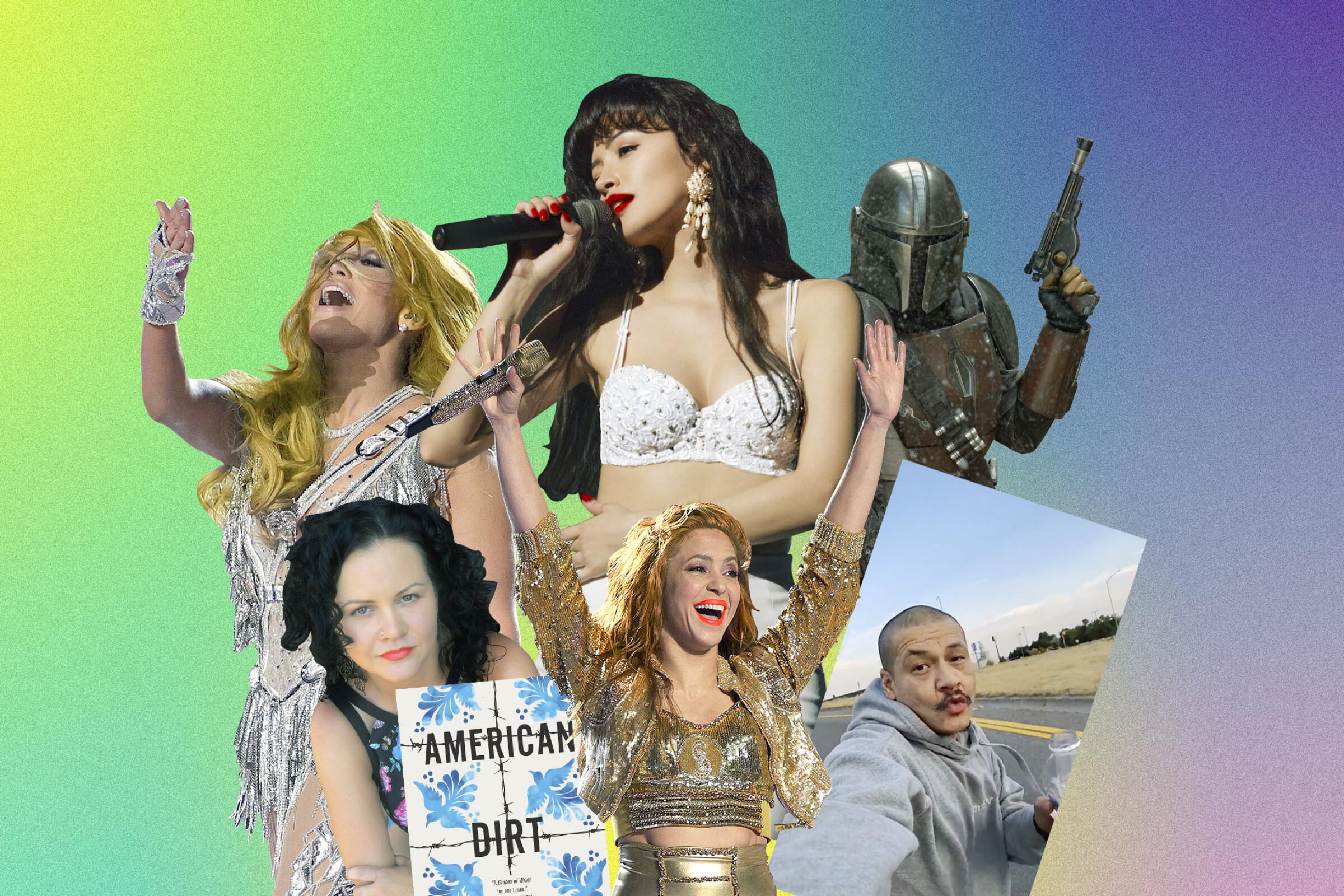
Out of the sorrow of 2020, shared experiences through the virtual vortex of our home computers, phones and smart TVs managed to create organic and emotionally binding moments across the spectrum of U.S. society. At the core of many of these moments were people of Latin origins.
While fuller representation still lagged in the arts and entertainment industries — considering that 61 million people in the United States claim some Hispanic or Latino heritage, or more likely a subcategory therein — the year was marked with notable successes that foretell a hyper-interesting 2021 if we all fasten our seat belts properly. Here are my entirely subjective highlights.
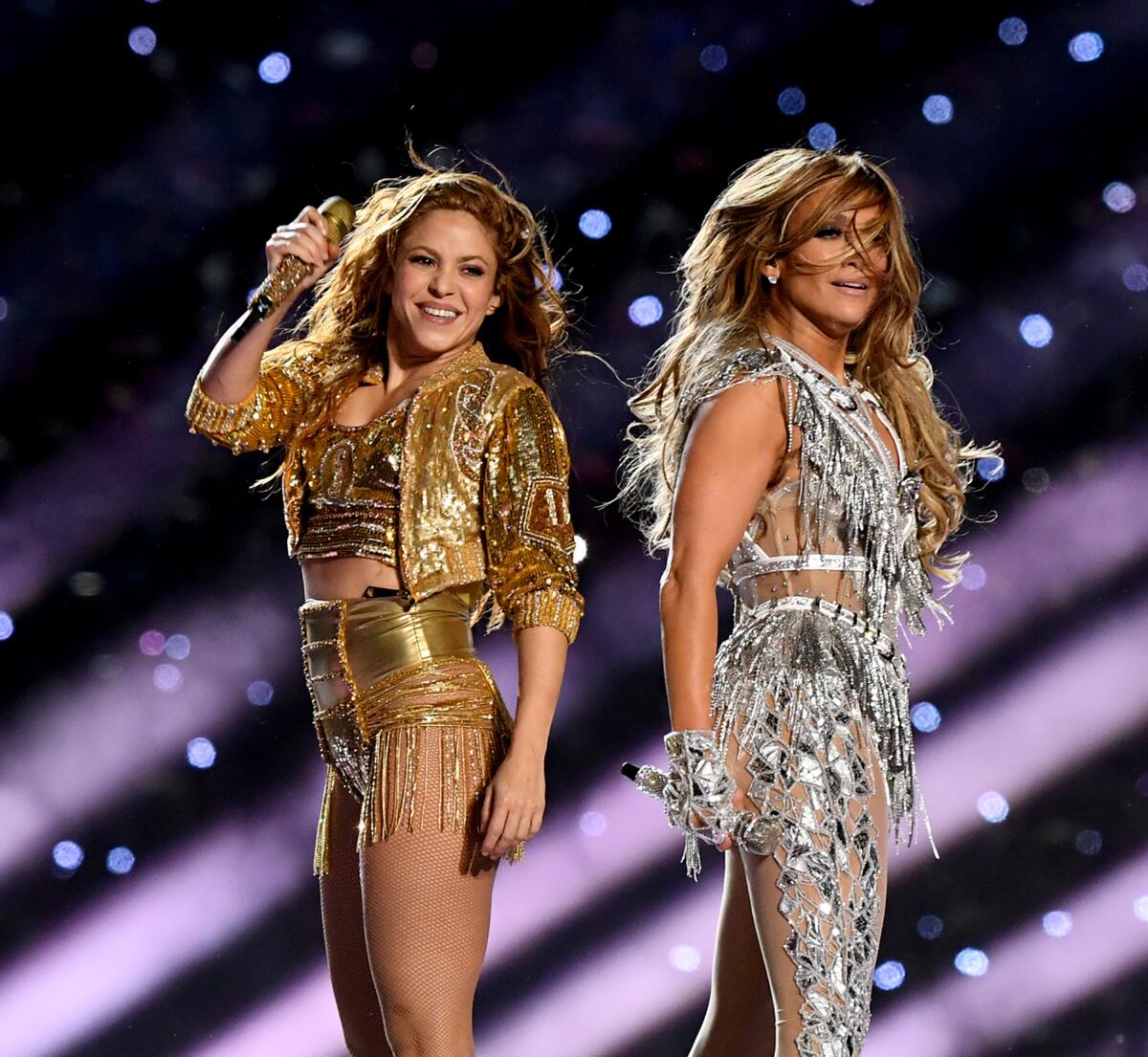
When Shakira and Jennifer Lopez took center field at Hard Rock Stadium on Feb. 2 with a hip-shimmying, pole-dancing, intensely aerobic Super Bowl halftime show, a Colombian immigrant and a Nuyoricana from the Bronx shared the spotlight in what is year after the year the world’s most-watched musical performance. It was the first all-Latina headliner halftime show at an NFL Super Bowl, and it happened in Miami-Dade, of course. Co-produced by Jay-Z’s Roc Nation, the show (relive it here) breached a line we barely registered: an unabashed celebration of Latin pride for millions to see at the start of an election year starring Donald Trump.
The president debuted a $10-million reelection campaign ad during Super Bowl LIV, three days before he would be acquitted in his Senate impeachment trial. Yet in the middle of the game, Shakira and Lopez led their all-Latina revue (with a cameo from Bad Bunny — see below), which reminded the world that they are phenomenally talented and driven women, whom millions of us have grown up watching and admiring.
In a “60 Minutes” interview, Shakira told correspondent Bill Whitaker: “I’m a woman, I’m Latina. It wasn’t easy for me to get where I am, and being at the Super Bowl is the proof that anything is possible, that the dreams of a little girl from Barranquilla, Colombia, are made of something.”
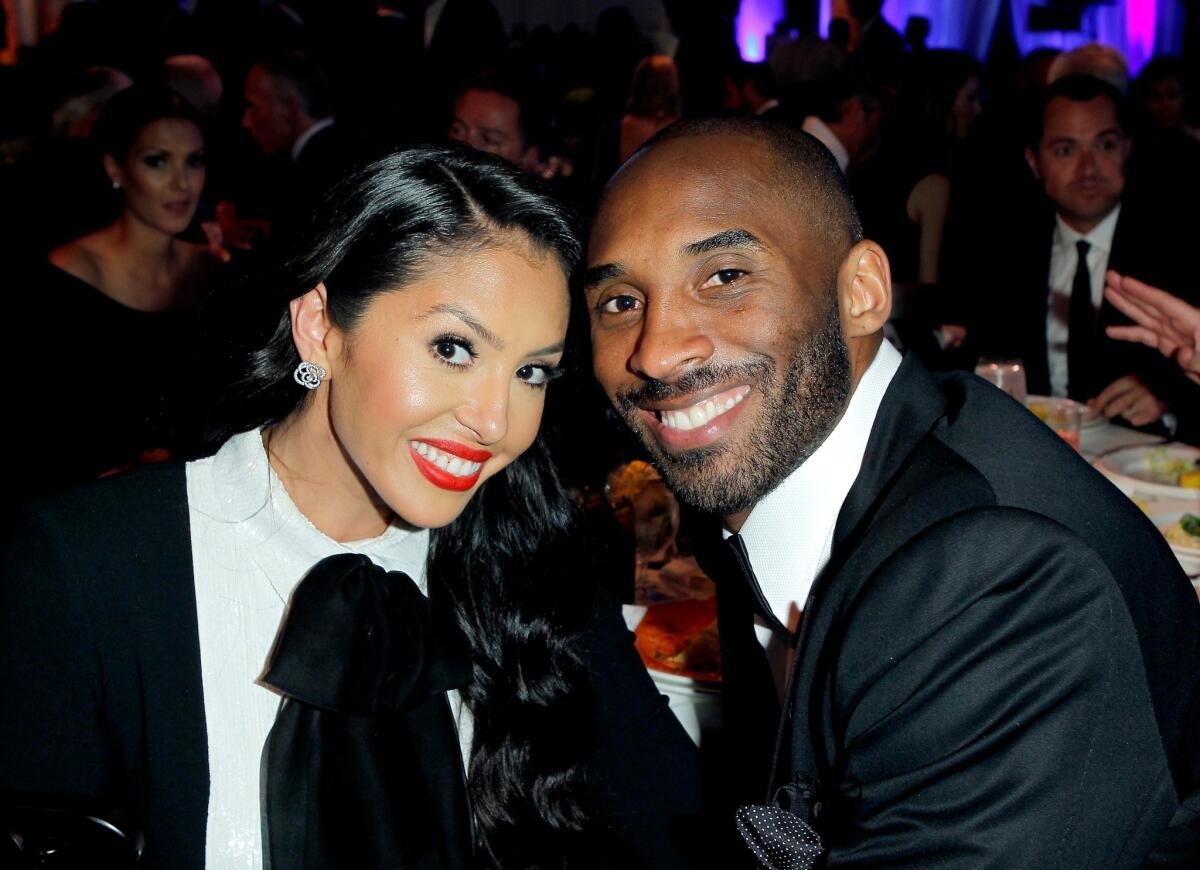
Kobe Bryant’s death at age 41 thrust his wife, Vanessa Bryant, famously press-shy, into the limelight in the worst of circumstances: the awful, foggy morning of Jan. 26, when a helicopter accident took his life, along with those of eight others, including Kobe and Vanessa’s daughter Gianna, 13.
Vanessa became the protagonist in the management of her husband’s legacy and his post-basketball empire, and more recently, the target of a lawsuit by her mother seeking back pay for babysitting, all while still in mourning her spouse and child. Bryant’s public poise amid heartbreak has been remarkable.
She had met Bryant innocently — the moment was literally caught on camera — on the set of a music-video shoot while she was still a student at Marina High School in Huntington Beach and was known as Vanessa Laine, (her then-stepfather’s name). The first time they spoke on the phone, they talked for hours. Despite the opposition of Bryant’s family, which led to years of estrangement, the pair married after she turned 18. Kobe was 22.
Upon donning the Lakers jersey, Kobe embraced brown L.A. immediately, and the city embraced him back. As he matured into a father of “four black Mexican-American daughters,” he referred to his all-female squad as “Latinas” and his wife playfully as “mamacita.” Bryant learned to speak very good Spanish; his bond with West Coast brown folks seemed to intensify as the years passed. The basketball legend loved the carnitas at his favorite Mexican restaurant, El Camino Real, in Fullerton, according to Times columnist Gustavo Arellano. “Tenía confianza,” one worker told Arellano, a crushing use of a phrase meaning: He was at home here; he was family.
The couple went through it; Kobe faced sexual assault charges, Vanessa forgave him for adultery. Later, she sought divorce, they reconciled. Fans stuck with them. Beneath the intensity of the NBA life and Vanessa’s brushes with controversy, the couple seemed to be building what looked like a fairy tale version of a typical Southern California household these days: mixed with at least one Latino parent. And they were totally O.C.
This is why many in Southern California are still quietly processing Bryant’s death and feel empathy for Vanessa. The couple personified a classically ’90s California teen dream, forged at theme parks and trips to the mall, so intimate to so many of us: Black and Mexican, a spark that sometimes happens at first sight.
Clearly inspired by long-standing efforts by Black creators in Hollywood to improve their presence before U.S. audiences, Latinx creators in 2020 coalesced across their diverse subgroups and networks of allies toward the same goal: agitate and organize to create, produce and distribute more nuanced and realistic stories reflecting the U.S. Latino experience.
In September, the fight went to Capitol Hill. Led by U.S. Rep. Joaquin Castro (D-Texas), chair of the Congressional Hispanic Caucus, the House Judiciary Committee held a hearing examining the issue of Latino, Black and Asian representation in Hollywood, with testimony from actor-producers Edward James Olmos, Erika Alexander and Daniel Dae Kim. This came after months of meetings between the caucus and top brass at entertainment companies. “Why should we subsidize exclusion?” Castro asked in a guest column for Variety titled “Latinos Love Hollywood, but Hollywood Hates Latinos.”
Then in October came a “we are tired” open letter to Hollywood from a group of more than 270 Latinx creators, led by buzzy showrunners Tanya Saracho (“Vida”) and Gloria Calderón Kellett (“One Day at a Time”). “We are tired of hearing ‘we couldn’t find any Latinx writers to hire.’ ... We are tired of being painted with the same brush. ... We are tired of stories that are only about our trauma.” The group became the Untitled Latinx Project and its rallying theme, “No stories about us without us.”
Will we see a changing of the narrative in 2021? Efforts to fix the failures of Latino representation in Hollywood often themselves fail, as initiatives get dropped by executives who cycle around different studio boardrooms at a constant clip. But in late October, the Government Accountability Office agreed to the Hispanic caucus’ request for a review of Latinos in entertainment.
Might Hollywood finally go, “Gulp”?
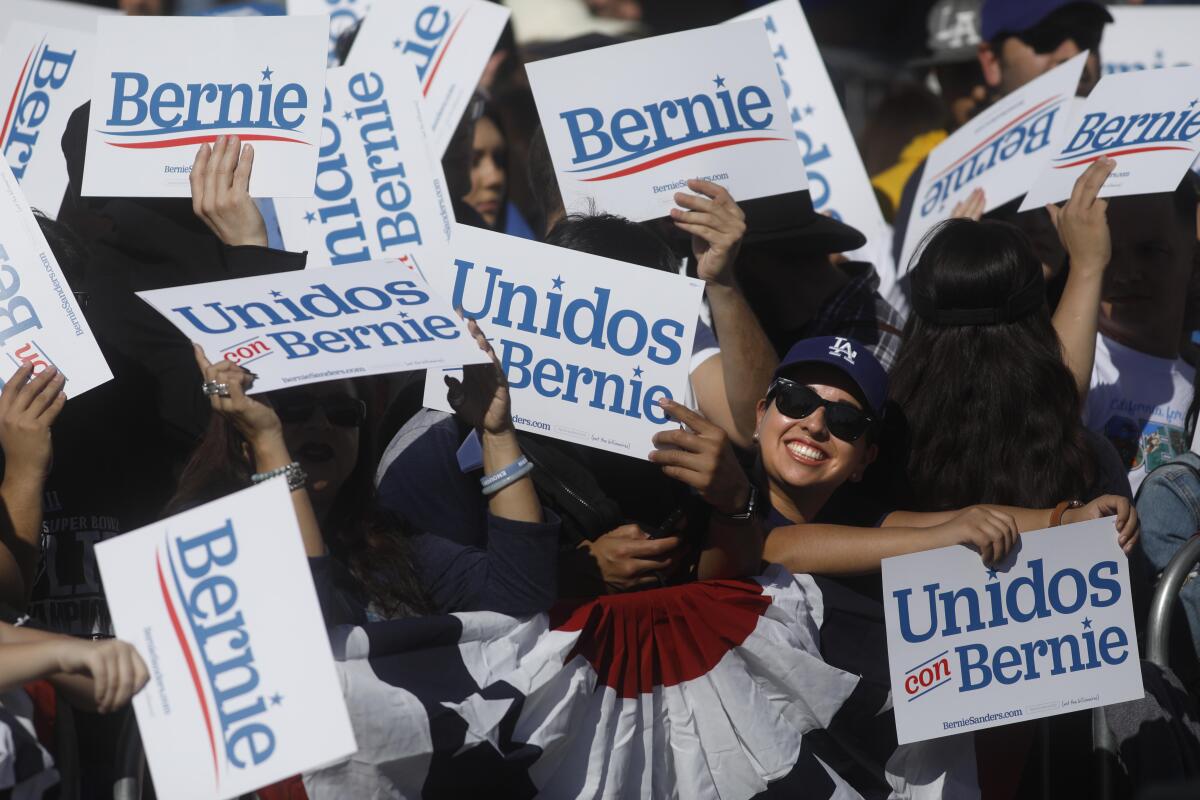
One of the most elaborately false architectures in political thinking — that U.S. Latinos are a measurable voting bloc with immigration as their top priority — finally crumbled in 2020 after decades of making lots of consultants lots of money.
And phew, thank goodness! Because Latino journalists, including a brigade of folks here at The Times, have time and again explained how U.S. Latinos are so far past the standard notion of a monolith in national elections that the terming has become laughable.
Latino support was strong for Sen. Bernie Sanders (I-Vt.) early in the Democratic presidential primaries — especially in his decisive win in Nevada’s caucuses. Until the tide turned toward former Vice President Joe Biden in South Carolina, it seemed “Tío Bernie” could actually become the nominee.
Many found proof in Sanders’ wins in Western states that an overtly progressive campaign could indeed capture large swaths of what is now the largest electoral demographic beyond non-Hispanic whites. Yet voting in the general election showed that some Latinos could be wooed by an overtly right-wing opposite.
On Nov. 3, Latinos in solidly Democratic strongholds such as the Rio Grande Valley in southern Texas shocked pundits when they repudiated national messaging about how bad Trump is for Mexican Americans and voted for him anyway. And among the diasporas of post-Cold War, post-”Pink Wave” South Americans in southern Florida, Trump fervor was strong. Suddenly, the message was that socialism remains a dirty word for Latinos. But which Latinos?
The lesson of the dismantled Latino voter myth in 2020 is two-fold: populism, from either left or right, can draw us in; and like every other way that Latin people complicate the black-and-white coding of U.S. society, projecting elections based on Latino or Hispanic identity alone may never be the same again.
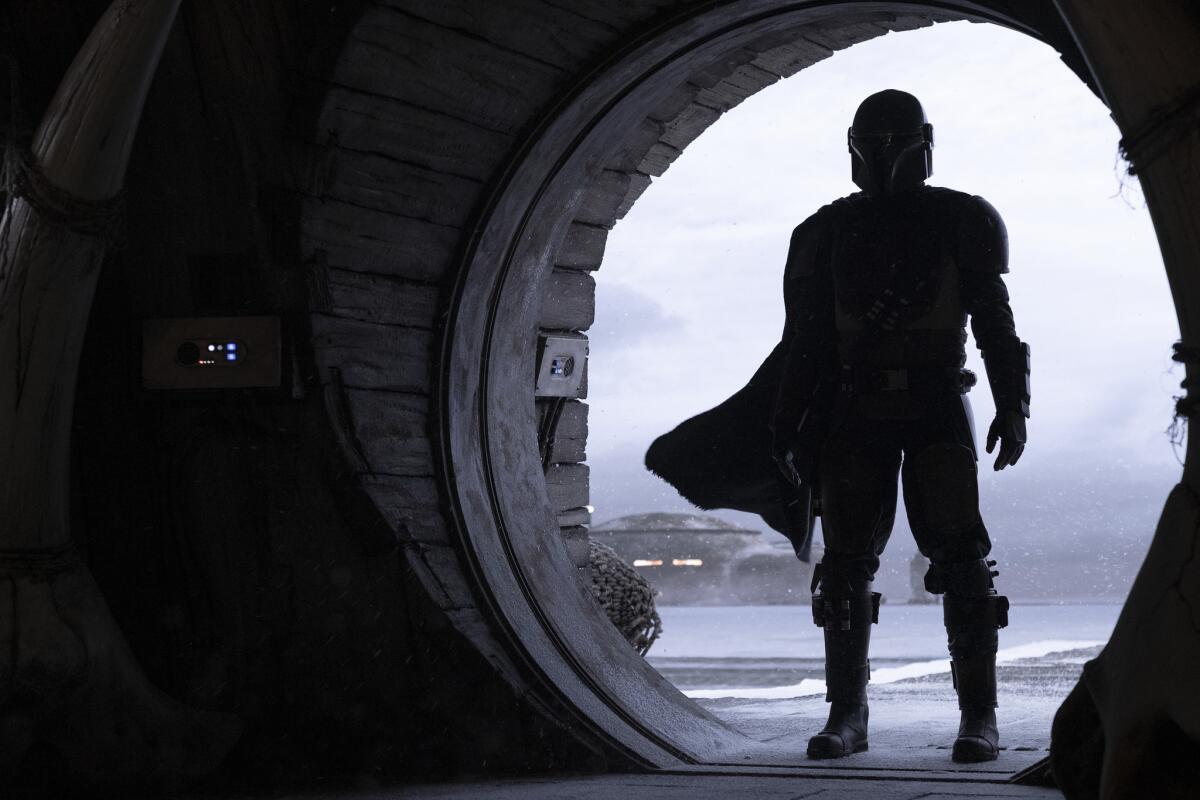
Pedro Pascal is arguably America’s latest crush, a bona-fide leading man employing all his strengths in the Disney+ hit “The Mandalorian” to convincingly express fear, anger and affection, despite the epic challenge of the helmet that totally obscures his face — an actor’s primary tool — throughout much of the series. Which made it all the more powerful this month (spoiler ahead) when he removed that helmet in the series’ Season 2 finale and shed tears of love toward Grogu, better known as Baby Yoda.
Call it credit to his craft that he was able to convey his character’s emotions while masked — or another case of Latinos hiding in plain sight.
Pascal, 45, is part of what we might call the normalizing of Latin American, Hispanic or Latino figures in non-Latino roles. This person is the Latinx lead whose ethnicity is almost afterthought or essentially obscured.
Consider Oscar Isaac (full name: Óscar Isaac Hernández Estrada), whose roles from “Inside Llewyn Davis” to three “Star Wars” movies rarely reveal his Guatemalan Cuban identity.
Pascal, born in Santiago, Chile, and a graduate of our own Orange County School of the Arts, has had a similar run of non-Latino roles. Although he spent three seasons playing cool-headed Agent Peña investigating Pablo Escobar in “Narcos,” many took notice of him a few years before that as the hot-headed Prince Oberyn Martell in “Game of Thrones,” and he can now be seen in theaters and on HBO Max as DC villain Maxwell Lord in “Wonder Woman 1984.”
Pascal, who speaks native Chilean Spanish and has embraced liberal and leftist causes, is the son of parents who escaped Chile to Denmark after the death of socialist President Salvador Allende. His success in “The Mandalorian” offers an irony about Pascal’s public persona: that he is totally Latino, playing a non-Latino (read: alien) lead.
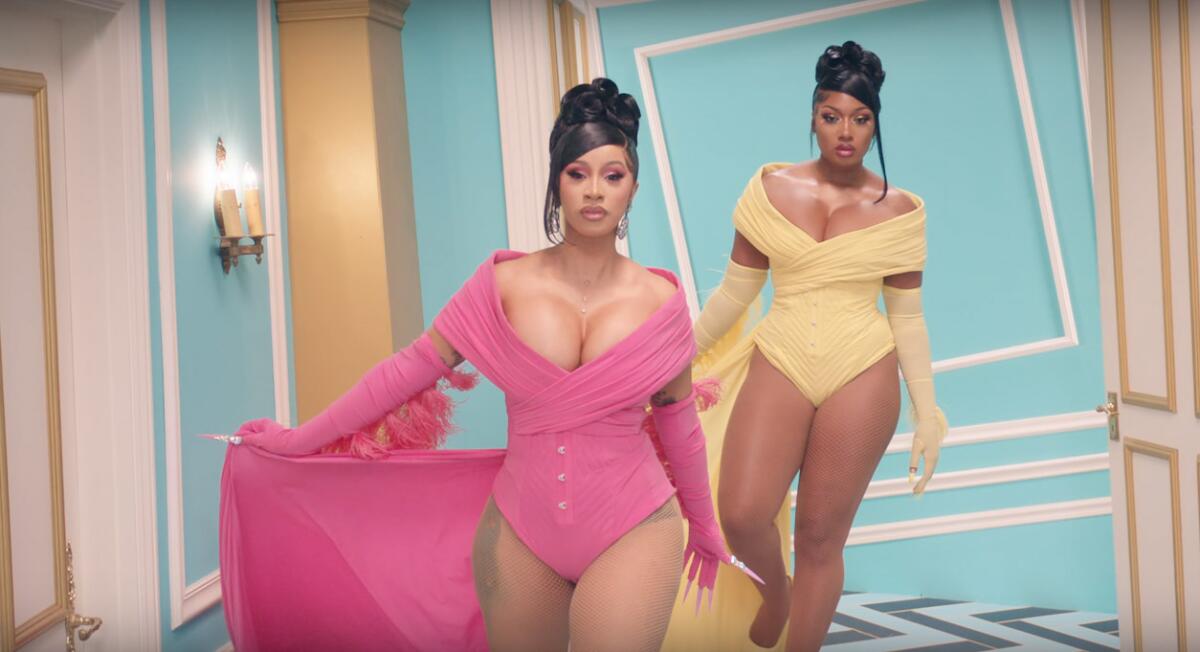
With swagger and sexual power, rapper Cardi B broke streaming records in 2020 with “WAP,” her nasty and much discussed collaboration with Megan Thee Stallion. Yet Cardi B is still the girl next door, literalmente. She’s cultivated a massive media personality thanks in part to her forever-a-homegirl candor, often in unscripted moments caught by social media or shared herself.
Her rise has been a poignant affair for many of us because of this. She remains, despite the fame and the sometimes-ugly self-inflicted media hits, a walking symbol of every assured, talented and unbossed Latina who “makes it.” When she reveals this side of herself, it is often as she careens into Spanish or Spanglish, showing us who Belcalis Marlenis Almánzar really is.
On March 10, Cardi B confronted her growing alarm about the then-new novel coronavirus by posting a brief but expletive-filled video on Instagram — and reflected so many of our own anxieties in the process. Dressed in a devastatingly form-fitting metallic dress, Cardi B warned people who might have doubted the severity of the new virus with a point about how it could shut down the economy and jobs and thus affect us all.
“Corona-VIRUS,” she digs in, with a dip of her hip, emphasizing the “virus” half of that word. “Corona-VIRUS! I’m serious! S— is real, s— is getting real!”
A single word, delivered with just the right touches of admonishment and comedy, quickly turned into a meme. A remix followed, and then others, followed by parodies, of course. The original clip has been viewed more than 36 million times. (And between us, I still use the phrase spoken in Cardi B’s manner when I’m trying to emphasize a point to others about how the coronavirus affects our lives.)
Of course, after her singular public service announcement, she hosted a string of largely maskless nightclub parties and a big Thanksgiving celebration, for which she defended herself by talking about how much money she spent on coronavirus testing for members of her family.
In politics, she eschewed the Kayne-and-Kim impulse to embrace societal reform under Trump and instead sat down for warm convos about income inequality with Sanders. “I’ve been so focused on you,” she told Sanders in a live interview in April. The chats revealed a genuine form of engagement with the political process.
In December, Cardi B was named Billboard’s woman of the year, the first female rapper to earn the nod. In her trademark blunt style, she accepted the award via video conference, calling herself one of the “regular girls.” She urged female fans to push themselves to excellence — by striving for it.
“You actually gotta put in the work. You gotta be ambitious. You gotta network. You gotta become great at what you do,” she said. “You gotta be able to take criticism — believe it or not, y’all be saying I don’t take criticism, but yes I do. [...] There’s hope for your dreams.”
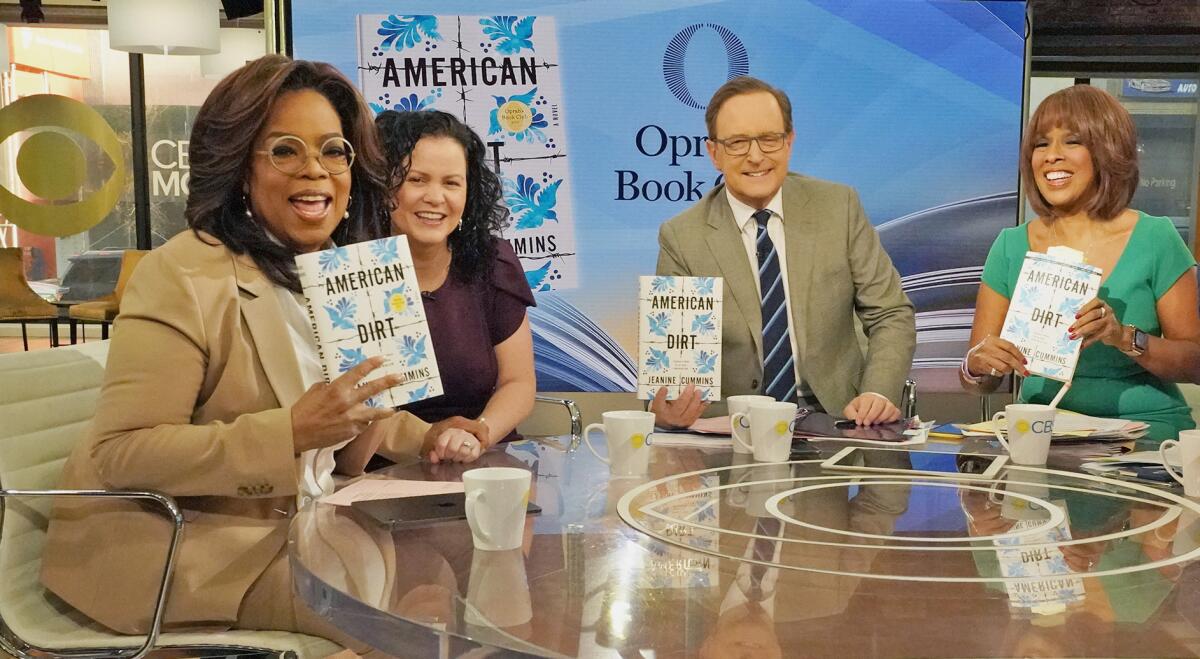
In early January, the publishing industry was abuzz with what was supposed to be the year’s first big blockbuster, “American Dirt” by Jeanine Cummins. The harrowing tale, told from the perspective of a Mexican woman escaping a brutal drug lord, was meant to humanize the epidemic of violence in Mexico.
Then came the righteous hatchet job by local Chicana author and teacher Myriam Gurba, “Pendeja, You Ain’t Steinbeck,” published at Tropics of Meta. The piece called out the book’s “overly ripe Mexican stereotypes” and sparked a grassroots backlash against the novel and its author. Within weeks, it seemed the entire U.S. publishing apparatus was backed into a cultural corner.
The New York Times was pressured into publishing a second, more critical review after its initial glowing endorsement. Here at the Los Angeles Times, two reviews were published simultaneously, one by critic at large Rigoberto González, who rejected the novel’s “moralizing” and “pandering.” Even Oprah Winfrey, who had made the novel one of her Book Club picks, hosted an Apple TV+ special featuring Cummins and a panel of indignant and intelligent Latina authors — sans Gurba — that seemed like a form of atonement from the Winfrey camp aimed at the crucial and always up-for-grabs U.S. Latina market.
The Cummins debacle stung, especially as the subsequent George Floyd protests brought issues of representation and racism to the fore in just about every industry and cultural sector. According to multiple reports, Cummins, who wrote of identifying as white, began claiming Latina heritage later in life, on account of having a white Puerto Rican grandmother. It was kind of Latina cultural transmutation — or appropriation — that did not fit the 2020 mold.
More and more public figures — Hilaria/Hillary Baldwin being the latest — have suddenly been “outed” or called out for going public with either fabricating or “discovering” some distant Hispanic or Latin American ancestry, which is fine, unless the discoverer is using his/her new-found heritage for immediate personal gain. As she was preparing to market “American Dirt” to the U.S. masses, Cummins displayed a lack of sensitivity for the themes in her own book with previous social media posts that would come back to haunt her: in one, she showed off her nail polish done in the barbed-wire design of her book cover; at an industry dinner, she gushed about table decorations that were actually flower holders made to look like portions of a border wall. Get it?
Awkwardly and almost comically so, the backlash to “American Dirt” confirmed lifelong complaints of Latinas against the publishing industry for generations: that their stories — our stories — are simply not considered “mainstream” by virtue of some magic rule that no one at any level of American publishing has ever been able to convincingly answer.
Dignidad Literaria, or “literary dignity,” a network founded by Gurba and fellow authors Roberto Lovato and David Bowles, as well as multiple allies and cosigners, has noted promising signs for 2021, starting with anecdotal references to an “increasing number” of hires of people of color in publishing and more books written by Latinos expected next year.
“But I see those gestures as being cosmetic and superficial, and they’re really not making concessions that transform the way power is allocated throughout the industry,” Gurba said recently. “They’re just tossing crumbs.”

Nathan Apodaca’s meteoric rise to peak organic influencer status off his Fleetwood Mac Tiktok video is everyone’s social-media fever dream. All it took was a casual singalong with “Dreams” while cruising on his longboard along an Idaho highway with a full bottle of Ocean Spray Cran-Raspberry juice.
The video, posted Sept. 25, spread to other social media platforms. Parodies upon parodies followed. Mick Fleetwood did a version. So did Stevie Nicks. In a year when so many brown and Black faces went viral because of police violence caught on video, Apodaca offered gleeful respite. As pop music critic Mikael Wood wrote in The Times, the clip was the antidote we all needed “during an increasingly ugly political moment.”
For Apodaca, now with more than 6.2 million TikTok followers, the fame inevitably led to endorsement deals: a new truck from Ocean Spray, a commercial for Boston Market, among others, “and he works with every major music label,” said Gina Rodriguez, a rep for Apodaca.
It all happened as if it had been written by Andy Warhol: the frenzy of going viral, the crescendo, the looney and inevitable intersections with brands and bona-fide sports or film celebrities. Apodaca is finishing the year at a plateau, and not without challenges, having recently caught COVID-19. “Nathan is still dealing with the sickness but is getting better everyday,” Rodriguez said in a statement.
The original video revealed — through the exuberance of this half-Mexican, half-Native resident of Idaho Falls, Idaho — a secret that so many people in the United States are a party to but rarely find room to discuss in the open. That Apodaca is also the neighborhood vato we all know: Most are lighthearted, kind and fun-loving, like @420Doggface280, in direct opposition to their prevailing stereotype.

If you still haven’t quite figured out what’s so special about Bad Bunny, here’s your cheat sheet.
With his raspy vocal delivery, good looks and chill attitude, Bad Bunny in 2020 became an avatar of contemporary female desire for the idealized contemporary non-machista male, one who is also comfortable with a measure of sexual openness. Look at the video for this year’s “Yo Perreo Sola,” the I-can-dance-with-myself anthem, in which he takes on multiple drag personas. Toying with gender norms in ways he hadn’t displayed in previous years, the Puerto Rican artist basically became what many straight girls wish their straight boyfriends would be like: slightly queer-signaling, but still madly and sexually in love with only her.
By default, he’s also an icon of attraction for a lot of gay guys too. And this means Bad Bunny is going to sell records and get streams. Lots and lots of streams.
It’s been a potent and remarkable rise. Just before the annual Calibash in January, when Staples Center was still holding concerts, fan Bridgett Diaz told me that she was at the mega-concert in 2018, when Bad Bunny was a lowly opener. “And now he’s headlining,” she said with wonder.
Perhaps no single Latin artist had a banner year like Bad Bunny. Born Benito Martínez Ocasio, he was a grocery store bagger and student at the University of Puerto Rico before becoming the “conejo malo” of the Latin trap or Latin urban explosion. In 2020, Bad Bunny was crowned the most streamed artist of the year on Spotify, and his second album this year “El Último Tour del Mundo,” debuted at No. 1 on the Billboard 200, the first all-Spanish-language album to do so in history.
The music is also good. His wordplay is fun, drawing from multiple Latin American slangs, and the songs feature layered sonar references — in a fragment of a lyric or a dip out of a melody — to classics of Spanish and Latin American rock that well-schooled ears pick up on. Listen again to his two albums this year, or better, start with his unrelenting spree with J. Balvin, their 2019 release “Oasis,” which set the stage for what 2020 brought for Bad Bunny.
Anyway you cut it, he had an incredible year, in spite of his COVID-19 infection last month. He snagged the cover of Rolling Stone (with a profile by Suzy Exposito, now a staff writer at The Times) and made a guest appearance at the Super Bowl halftime show with Lopez and Shakira (see above).
In separate interviews with Times journalists this year, Bad Bunny opened up about personal changes and rising expectations. Speaking with foreign correspondent Kate Lithicum during a stop in Chicago, the 26-year-old hinted at a potentially not-straight sexual identity, though he said he was attracted to women. He recently told Exposito that he looked forward to the greatest bragging-rights test of them all in early 2021 — possibly winning a “gringo Grammy,” a winking nod at his Latin-lens world-view and that of legions of his fans. “To us,” he said, “the Latin Grammys are the Grammys.”
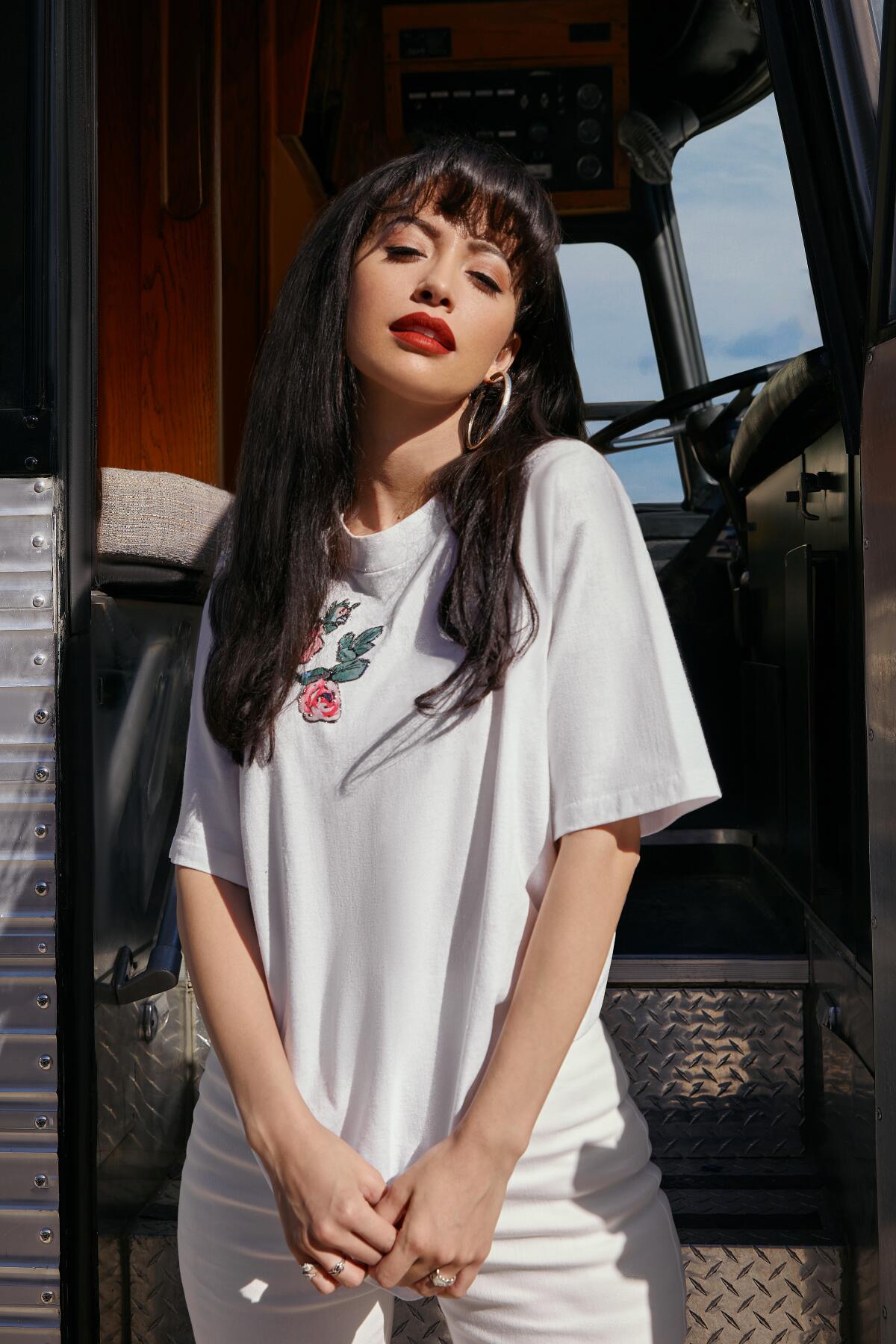
To this day, Selena Quintanilla — the superstar Tejana singer and style icon murdered at age 23, just as she was poised to take off in the U.S. mainstream market — remains a potent symbol for U.S. Latinas, even among those born after her 1995 death. As filmmaker Lourdes Portillo says in the opening of “Corpus,” her 1999 PBS documentary on Selena: “She is a repository of a lot of ideals, a lot of desires.”
So of course, anything by Netflix about the singer would be expected to come under intense scrutiny by Selena’s fans — and it did. The series, which premiered in December nearly two years after it was announced, faced criticism, including from Times critic Lorraine Ali, for seemingly building the story of Selena’s rise around her father and brother, pushing Selena aside to a supporting role in her own story. Particularly for young Latinas and Latinx viewers, who this year more than any yearned for richer depictions of themselves on major platforms, the male-centered storyline of “Selena: The Series” especially disappointed.
But everyone was still talking about the show, it seemed. (Check our four-way conversation about Selena’s last recorded album.) Fans noted that their screens showed “Selena: The Series” was trending No. 1 on Netflix in the United States and in Mexico, proving in some way that 25 years after her death, Selena was still fomenting that cross-cultural energy she longed for.
And in truth, “Selena” is moving television at points. Its success meant millions of non-Latino Americans spent hours over nine episodes observing an intimate, if almost romantic depiction of a typical U.S. Latino domestic dynamic, featuring the most likely kind of “Hispanic” they have next door, Mexican Americans. The Quintanillas are exceptional, but there’s a little bit of many of us in their household.
Jaime Dávila, cofounder and president of Campanario Entertainment, the production house that made the series, declined to comment for this article on the criticism the show received. But before the release, he told Times colleague Yvonne Villarreal that he was aware of the stakes. He noted that they occur largely behind the scenes. Executives, he said, continue to insist that U.S. Latinos make up a “separate” category in entertainment.
“What I keep trying to say and what Campanario keeps trying to say with everything we do is that we’re not a separate category,” Davila told Villarreal in October. “We’re part of America. We’re part of the mainstream.”
Campanario declined to say whether audience reaction to Season 1 might force any changes before the next season streams. Through a spokeswoman, the company confirmed that it has already wrapped Season 2.
Until a second round of “Selena: The Series,” fans can look forward to a documentary podcast series by Maria Garcia at Boston NPR station WBUR-FM and Futuro Studios in Boston, expected to drop in January. In other words, Selena studies, or the discussion and analysis of her persona and music, are certain to remain a pop topic in 2021.
The biggest entertainment stories
Get our big stories about Hollywood, film, television, music, arts, culture and more right in your inbox as soon as they publish.
You may occasionally receive promotional content from the Los Angeles Times.